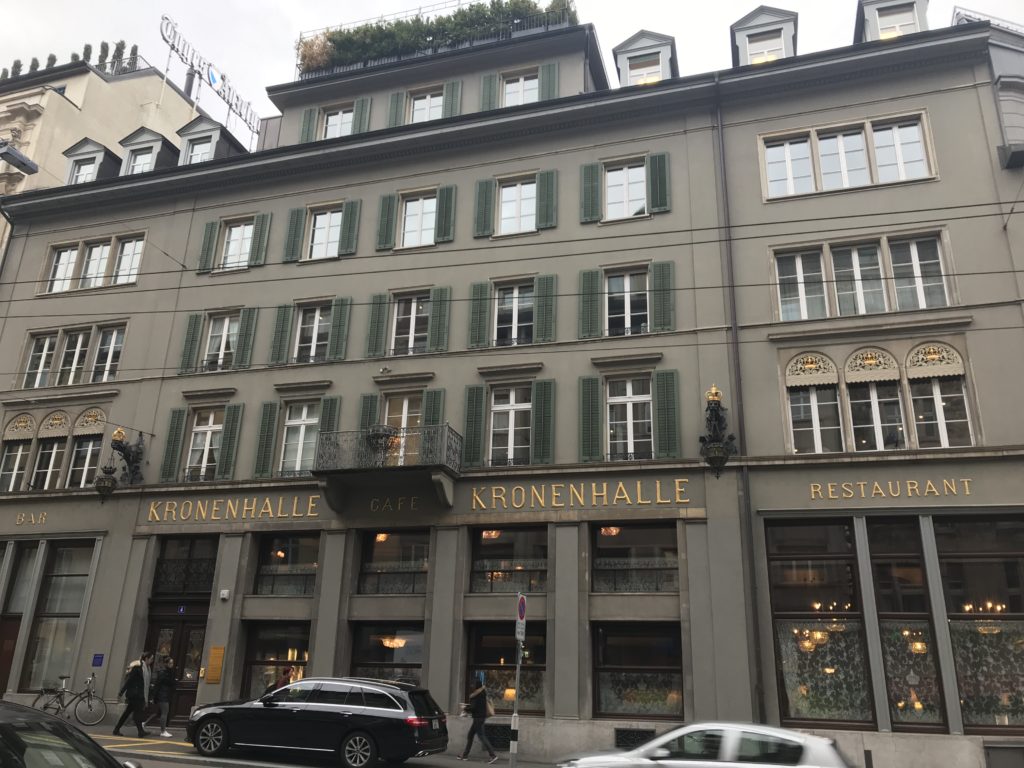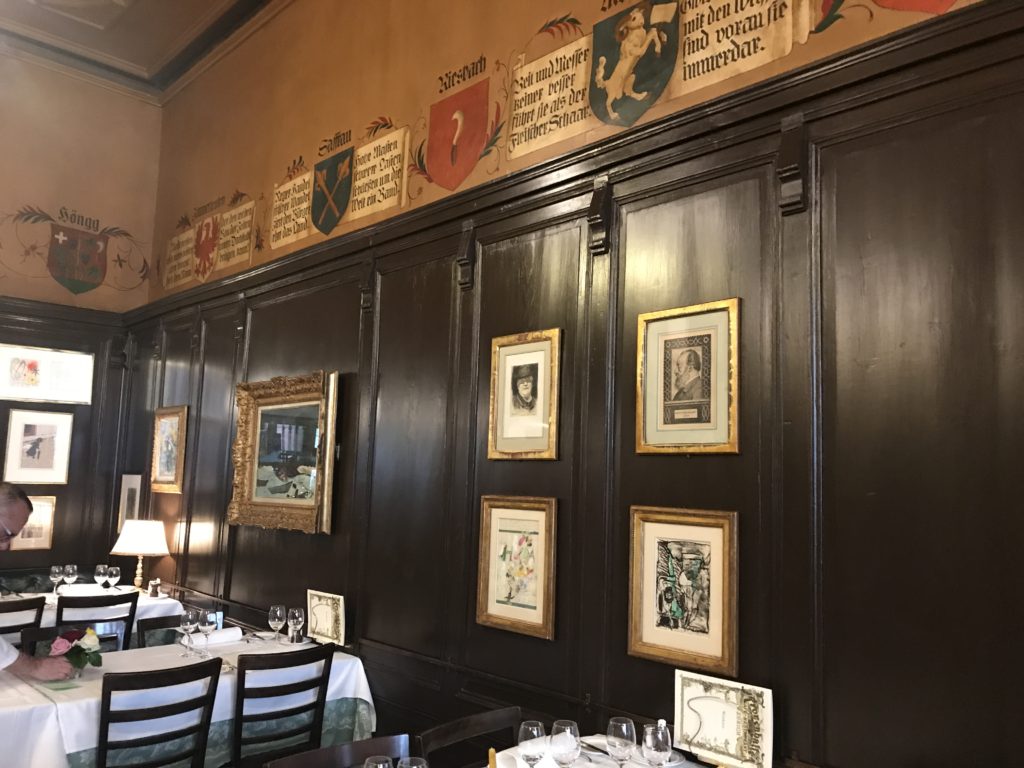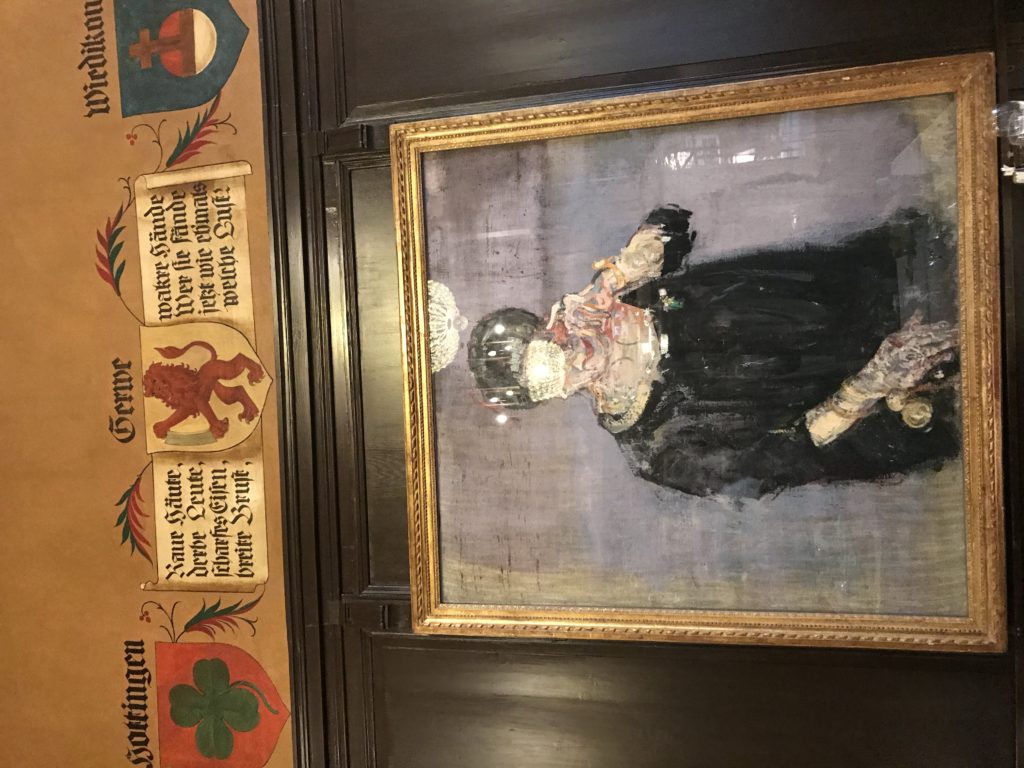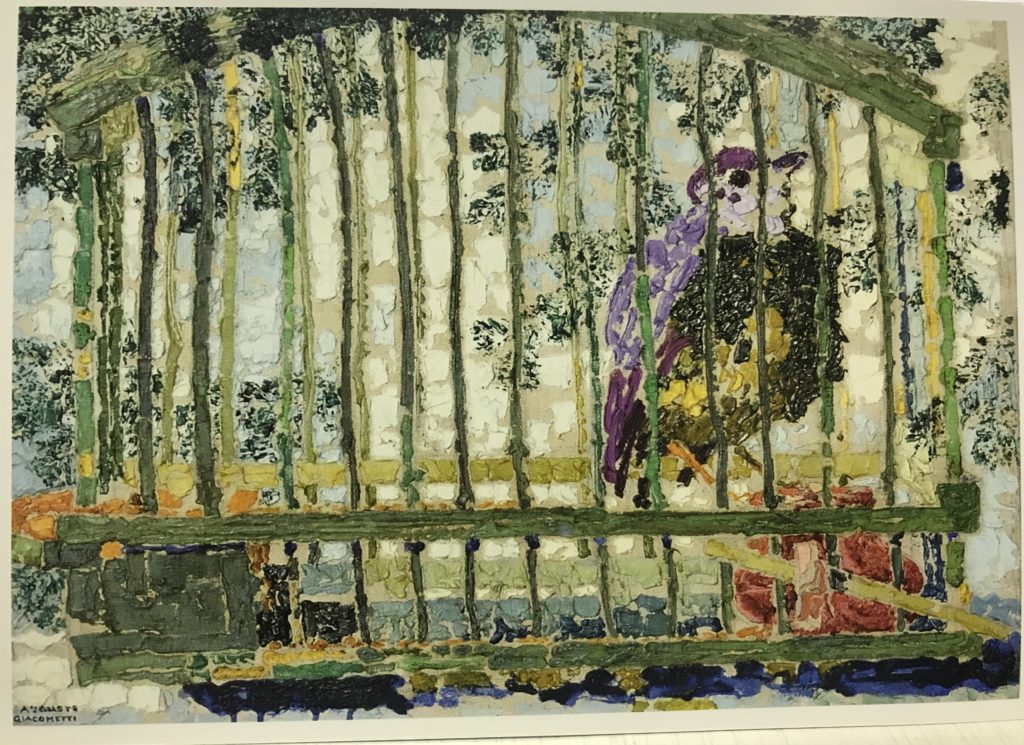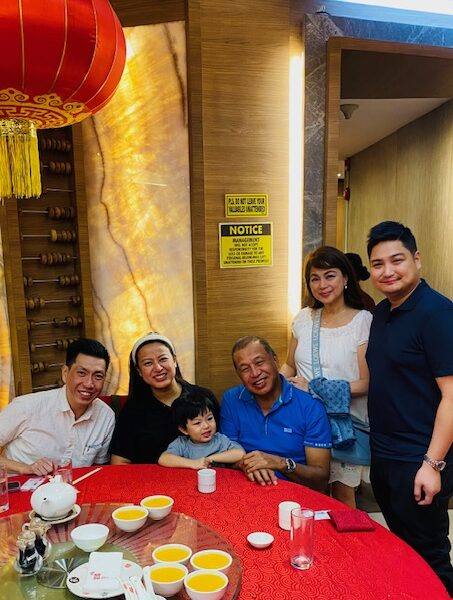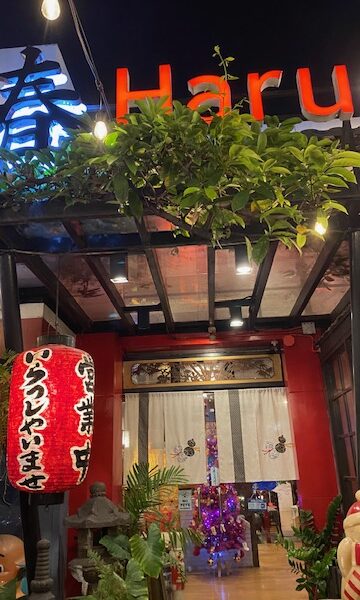April 10, 2019, Wednesday
It was so nice of Mr. Andreas Keller to have brought us to the historic Kronenhalle Restaurant in Zurich. He jokingly said he is the restaurant’s furniture because he is always there.
This restaurant is not for the ordinary although it’s open to the public but you have to reserve ahead of time. 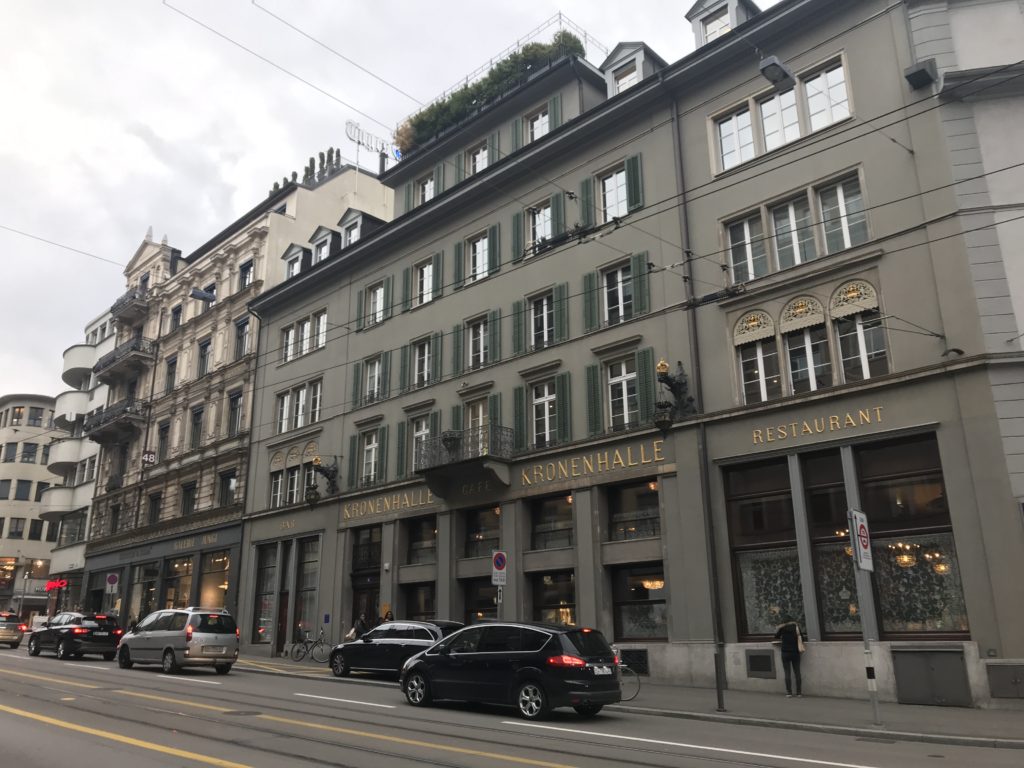
Mr. Keller stood up to greet his friend who was dining at the nearby table, the chairman of Roche who recently celebrated his 90th birthday.
The guy was sitting beside this painting of Mrs. Hulda Zumsteg.
An original painting by Marc Chagall hangs on the wall across me. I couldn’t take my eyes off it. I would like to buy a Chagall, a poster only.
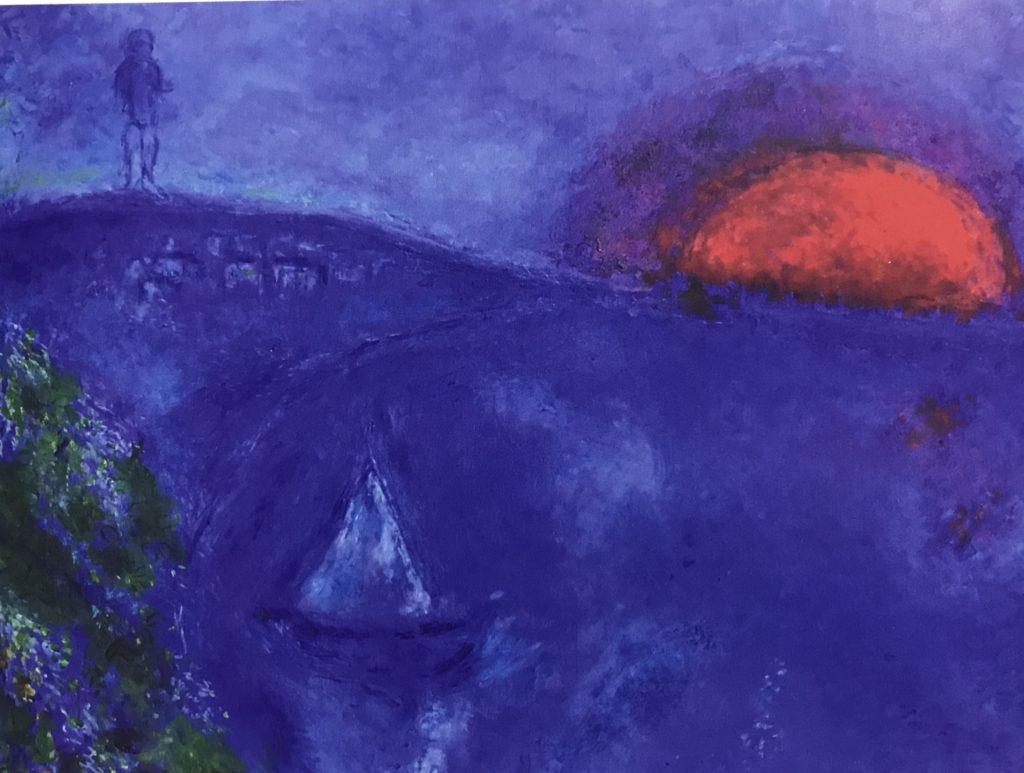
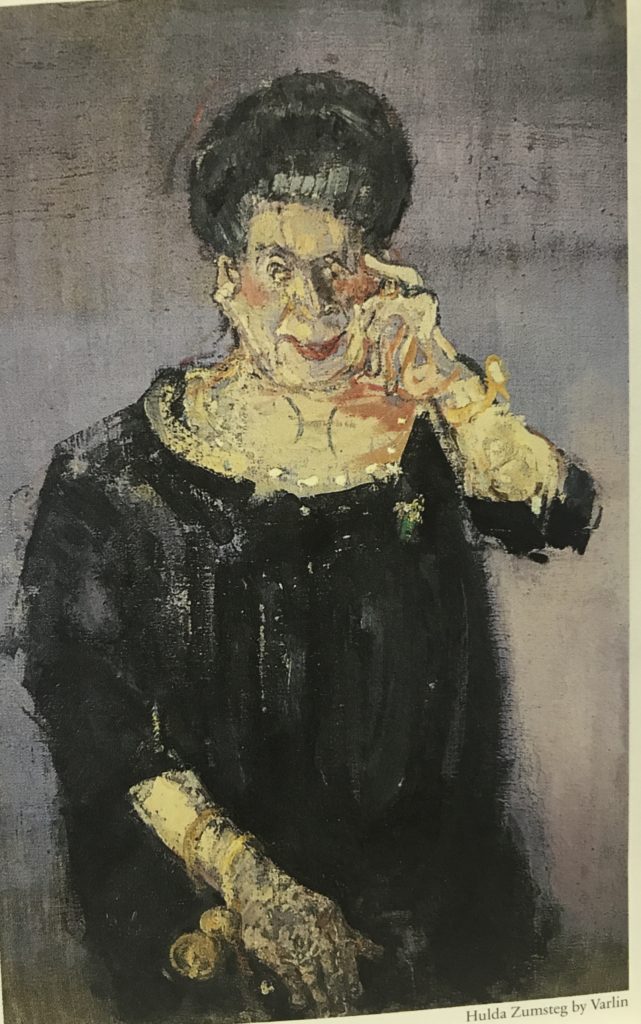 Long History of Kronenhalle
Long History of Kronenhalle
In 1925 Gottlieb and Hulda Zumsteg bought the Kronenhalle on Ramistrasse in Zurich. The former Hotel de la Couronne was where Zurich’s high society would meet such as Gottfried Keller, the most famous of Zurich’s chroniclers, or the great Swiss painter Arnold Bocklin.
The hotel was originally close to the lakefront but due to land reclamation between 1882 and 1887 the hotel was no longer adjacent to the ferry. The number of travelers decreased, as did the number of carriage owners whose livelihoods depended on the transport of goods across the lake, and the arriving and departing passengers.
The owner converted the hotel’s coach house into a Brasserie. It is a high-ceilinged room that inspired the name KRONENHALLE when the hotel was converted into a restaurant.
The Zumtegs took over the restaurant which had been for sale for a very long time. Gottlieb Zumstag had already made a name for himself in Zurich’s restaurant scene most recently with the Muhle restaurant in the Niederorf where he made good money.
Things did not come easy for the restaurant. Then the war came.
Mrs. Zumsteg offered free lunch to students consisting of soup mixed with little sausages. The many artists who sought refuge in Switzerland from all over the world during the war used to meet inside the restaurant. Mrs. Zumteg offered them food that remained of dishes that had been ordered by rich customers, and she also encouraged other customers to buy some of the artworks from those artists.
Some of the artists gave Mrs. Zumsteg their pieces in gratitude for her generosity to them.
Her restaurant was the meeting place of Marino Marini, Germaine Richier, Willy Guggenheim (better known as Varlin), and Alberto and Diego Giacometti.
After the war, those artists, from Italy and France, would tell stories of the special restaurant at Bellevue, Zurich.
The son of Hulda and Gottlieb, Gustav Zumsteg climbed his way up the hierarchy of the Abraham silk company. The major couturiers in Paris, New York, Madrid, Rome, and London all wanted his designs. He became friends with Cristobal Balenciaga, Christian Dior, Jacques Fath, Coco Chanel, Hubert de Givenchy and with Yves Saint Laurent.
With his success in the fashion world, Gustav started collecting art and soon the walls of the restaurant were inadequate to hang his art collections.
Gustav’s artist friends Marc Chagall and Joan Miro frequented the restaurant. Their signatures grace the guest book alongside those of Hollywood stars, politicians, musicians and sportsmen and women.
The walls of Kronenhalle are adorned with paintings from Miro, Picasso, Rauschenberg, Chagall, Tinguely, Kupa, and Klee.
Mrs. Zumsteg wore the most elegant dresses made out of fabrics from her son’s business and tailored by great fashion designers – Cristobal Balenciaga, Hubert de Givenchy, and Yves Saint Laurent. She would wear a magnificent pearl necklace, a Cartier lion bracelet, and a Tiffany ring.
Marc Chagall called her “ma sceur” (my sister), and her son Gustav “mon fils spirituel” (my son in spirit).
Mrs. Zumsteg died in 1984, her son in 2005, and by that time the Kronenhalle has become a legend.
There is now a Hulda and Gustav Zumstag Foundation that makes sure Kronenhalle continues to thrive. And this depends on the same factors that created it: the guests, the pictures, the food and the unique setting that is exceedingly human. Or as Gustav Zumsteg would say “sans pareil” or without parallel.
Source:
Kronenhalle by Michael Merz

